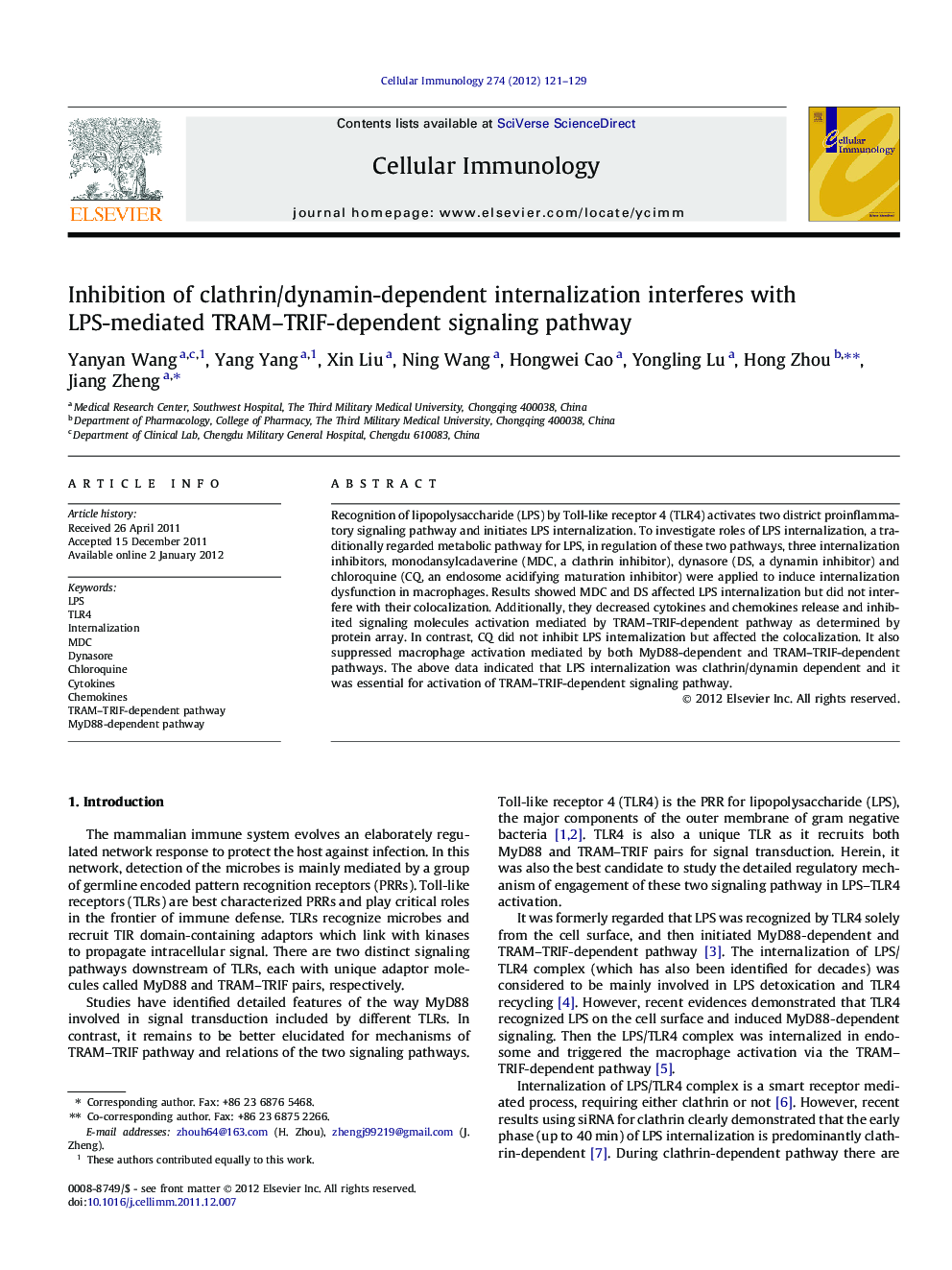| Article ID | Journal | Published Year | Pages | File Type |
|---|---|---|---|---|
| 2167262 | Cellular Immunology | 2012 | 9 Pages |
Recognition of lipopolysaccharide (LPS) by Toll-like receptor 4 (TLR4) activates two district proinflammatory signaling pathway and initiates LPS internalization. To investigate roles of LPS internalization, a traditionally regarded metabolic pathway for LPS, in regulation of these two pathways, three internalization inhibitors, monodansylcadaverine (MDC, a clathrin inhibitor), dynasore (DS, a dynamin inhibitor) and chloroquine (CQ, an endosome acidifying maturation inhibitor) were applied to induce internalization dysfunction in macrophages. Results showed MDC and DS affected LPS internalization but did not interfere with their colocalization. Additionally, they decreased cytokines and chemokines release and inhibited signaling molecules activation mediated by TRAM–TRIF-dependent pathway as determined by protein array. In contrast, CQ did not inhibit LPS internalization but affected the colocalization. It also suppressed macrophage activation mediated by both MyD88-dependent and TRAM–TRIF-dependent pathways. The above data indicated that LPS internalization was clathrin/dynamin dependent and it was essential for activation of TRAM–TRIF-dependent signaling pathway.
► LPS/TLR4 complex via clathrin/dynamin-dependent internalization participated in TRAM–TRIF-dependent pathway. ► Chlorquine would interfere with two pathways, demonstrating endosome acidifying maturation had more important roles. ► LPS and TLR4 did not colocalize at same compartment in the cells treated with chloroquine, which was not reported previously. ► A draw of cytokines and chemokines related to TRAM–TRIF pathway was outlined, which was not reported previously.
